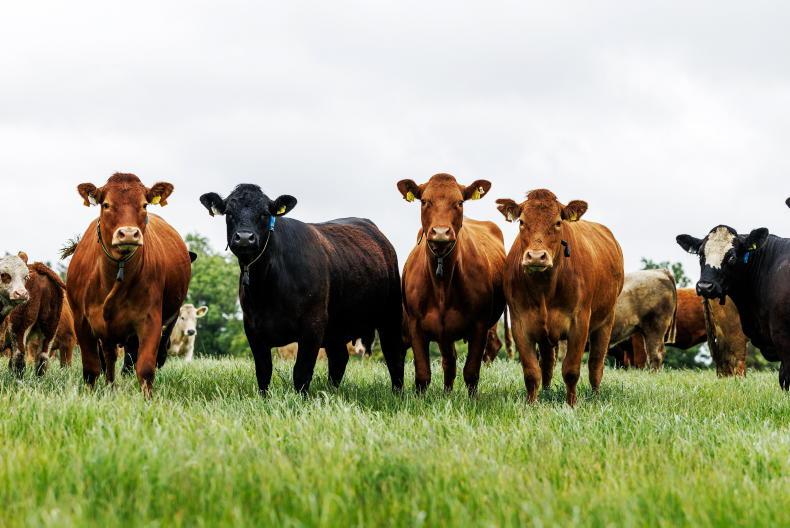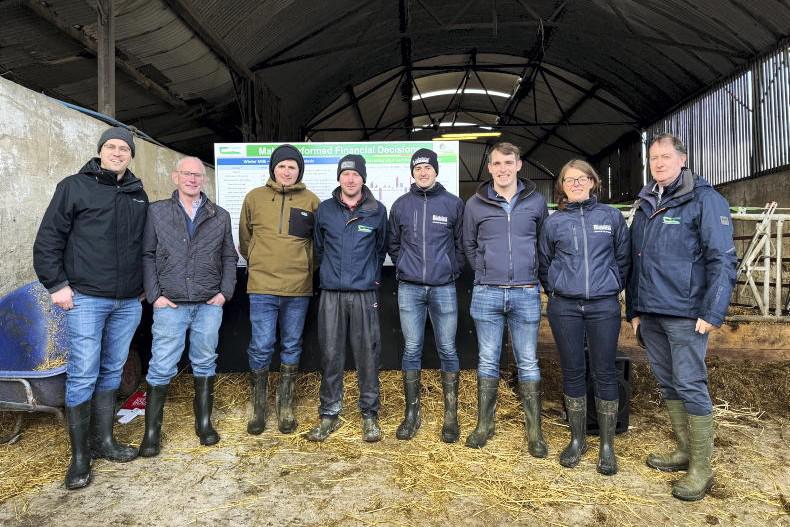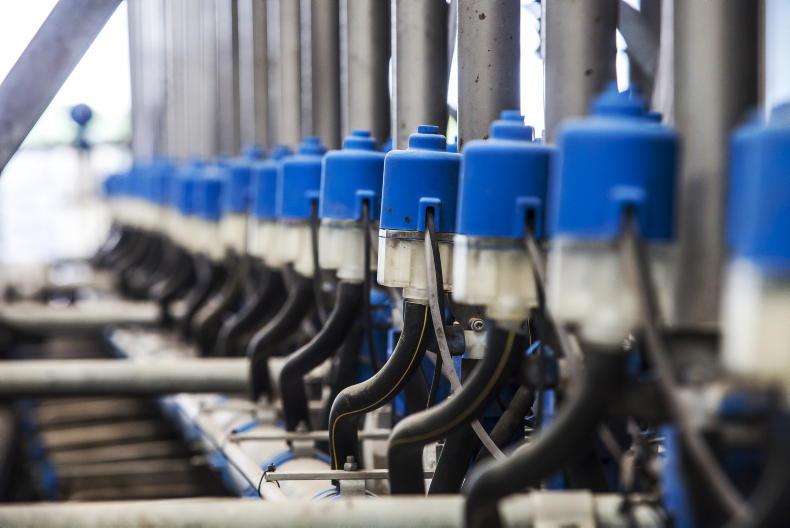Feed space: Tips for maximising performance in winter milk systems are outlined here.
There are some lessons for spring milk producers here too.
As herds will be housed fully over the next four or five weeks, a good chunk of milk will be produced indoors this winter.
Feed space is critical and something which can often be overlooked, even for dry cows. Competition for feed is a big no-no and can lead to all sorts of problems such as animal stress, poor weight gain and body condition score loss.
Where cows are being buffer-fed silage or other feeds, all cows should be able to eat at the one time. This means at least 3ft of feed space is required per cow and maybe even more depending on cow width. If this isn’t available, I’d be inclined to feed fewer cows so as to prevent excessive pucking and bullying at the feed face.
Alternatively, introduce additional temporary feed space through using round feeders on concrete yards, or feed in the collecting yard. During the dry period, where silage is being fed ad lib, much less feed space is required per cow, with a minimum of 1ft or 30cm needed per cow. Ad lib means there is always feed available. If cows run out of silage at any stage that is not ad lib and additional feed space is needed so that more cows can feed at the one time.
Feed: With feed costs rising and likely to rise further, the type and quantity of meal being fed needs further scrutiny, particularly in winter milk herds where feeding rates are likely to be high this winter.
In this week’s Focus James Dunne from Teagasc says energy levels are as important as crude protein content when choosing what ration to feed. He compares two rations with the exact same protein content but one has a ufl of 0.89 and the other has a ufl of 0.97. The higher ufl ration has the potential for an extra 220l to 260l of milk per tonne of meal, all other things being equal and depending on silage quality and feed rates.
In a lot of cases, diets and feed rates are formulated based on what the highest yielding cows in the herd are producing. In reality, only 10% to 15% of cows in a herd will be achieving these top yields and the vast majority of the milk being produced on the farm will be from cows producing much lower volumes. Feeding rates should be tailored towards what the average cow in the herd requires rather than what the top cow needs. If needs be, these top cows could be managed separately or fed extra in the parlour.
While grass and grass silage is relatively plentiful, treat it as though it’s scarce. With the high cost of fertiliser, all feed is going to be expensive next year, including silage. Being able to carry over stocks into next year will help to reduce exposure to higher nitrogen costs. Ration out what grass is available for as long as possible.
The weather and ground conditions will determine how long more grazing will go on for but management has a big role to play too. Allocate grass to cows and youngstock on a 12- to 24-hour basis to extend the round length as long as possible.
Feed space: Tips for maximising performance in winter milk systems are outlined here.
There are some lessons for spring milk producers here too.
As herds will be housed fully over the next four or five weeks, a good chunk of milk will be produced indoors this winter.
Feed space is critical and something which can often be overlooked, even for dry cows. Competition for feed is a big no-no and can lead to all sorts of problems such as animal stress, poor weight gain and body condition score loss.
Where cows are being buffer-fed silage or other feeds, all cows should be able to eat at the one time. This means at least 3ft of feed space is required per cow and maybe even more depending on cow width. If this isn’t available, I’d be inclined to feed fewer cows so as to prevent excessive pucking and bullying at the feed face.
Alternatively, introduce additional temporary feed space through using round feeders on concrete yards, or feed in the collecting yard. During the dry period, where silage is being fed ad lib, much less feed space is required per cow, with a minimum of 1ft or 30cm needed per cow. Ad lib means there is always feed available. If cows run out of silage at any stage that is not ad lib and additional feed space is needed so that more cows can feed at the one time.
Feed: With feed costs rising and likely to rise further, the type and quantity of meal being fed needs further scrutiny, particularly in winter milk herds where feeding rates are likely to be high this winter.
In this week’s Focus James Dunne from Teagasc says energy levels are as important as crude protein content when choosing what ration to feed. He compares two rations with the exact same protein content but one has a ufl of 0.89 and the other has a ufl of 0.97. The higher ufl ration has the potential for an extra 220l to 260l of milk per tonne of meal, all other things being equal and depending on silage quality and feed rates.
In a lot of cases, diets and feed rates are formulated based on what the highest yielding cows in the herd are producing. In reality, only 10% to 15% of cows in a herd will be achieving these top yields and the vast majority of the milk being produced on the farm will be from cows producing much lower volumes. Feeding rates should be tailored towards what the average cow in the herd requires rather than what the top cow needs. If needs be, these top cows could be managed separately or fed extra in the parlour.
While grass and grass silage is relatively plentiful, treat it as though it’s scarce. With the high cost of fertiliser, all feed is going to be expensive next year, including silage. Being able to carry over stocks into next year will help to reduce exposure to higher nitrogen costs. Ration out what grass is available for as long as possible.
The weather and ground conditions will determine how long more grazing will go on for but management has a big role to play too. Allocate grass to cows and youngstock on a 12- to 24-hour basis to extend the round length as long as possible.









SHARING OPTIONS